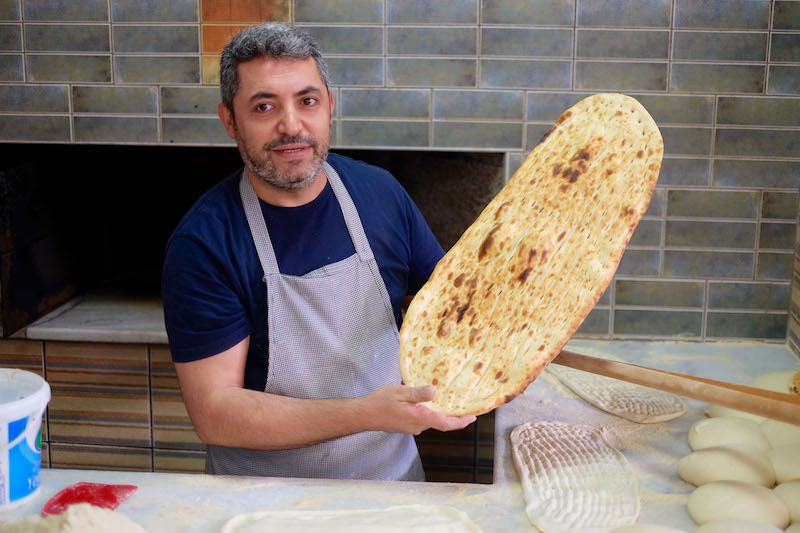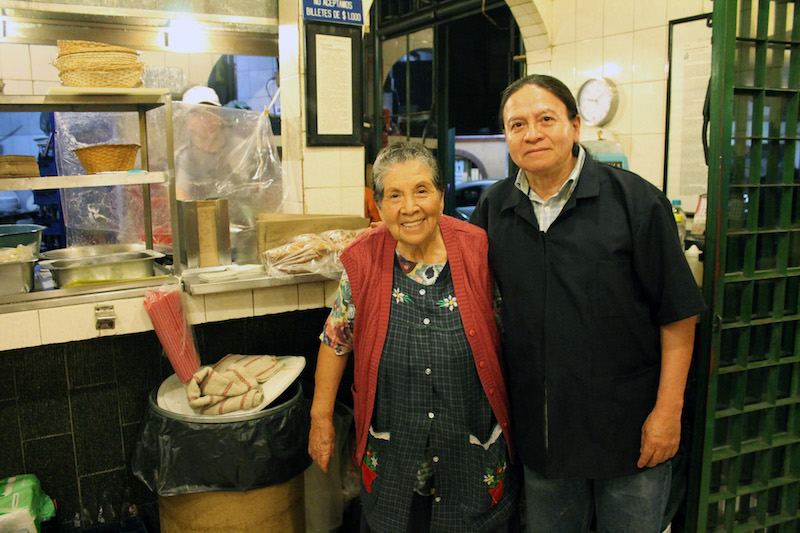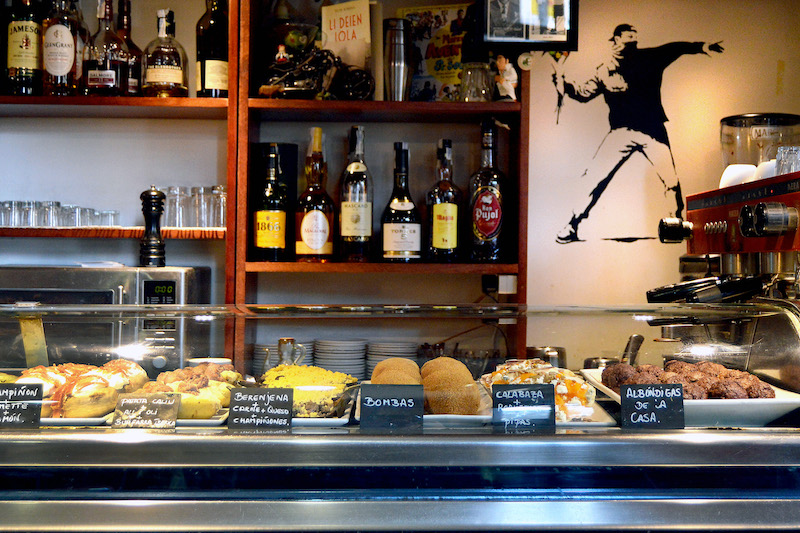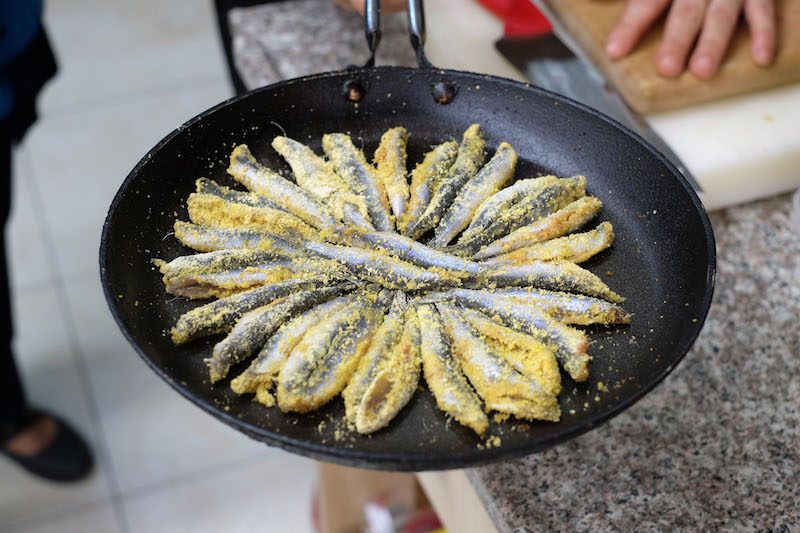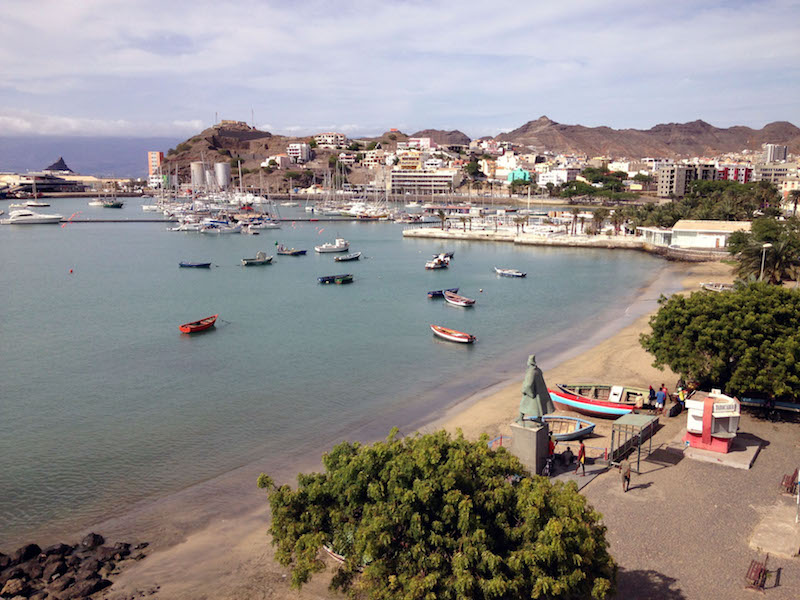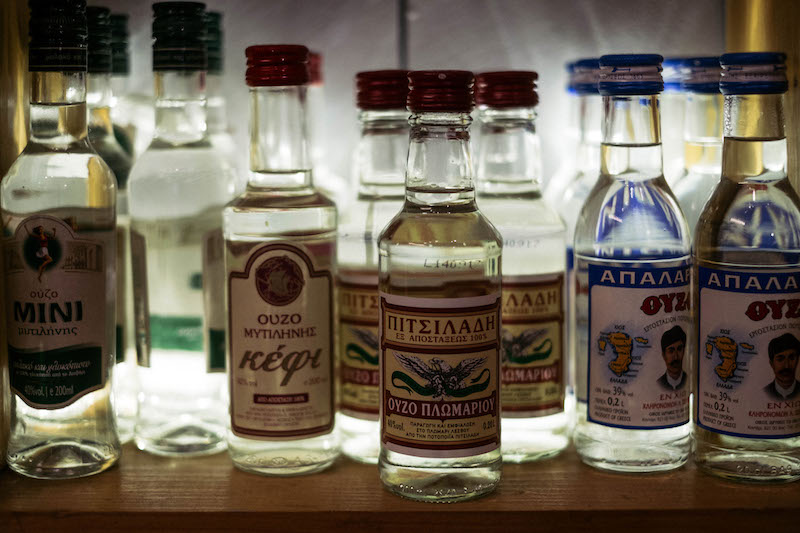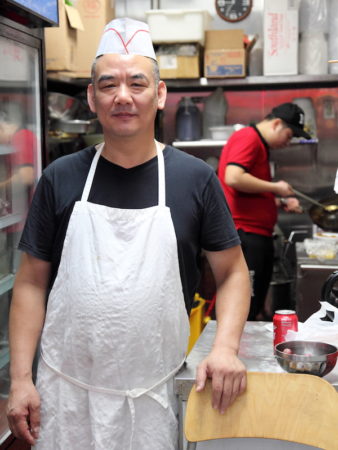We can't find the internet
Attempting to reconnect
Something went wrong!
Hang in there while we get back on track
Search results for
Tbilisi
Dried Fruits Sweeten A Dreary Winter’s Day
Churchkhelas, Georgia’s traditional homemade energy bar made of grape must, nuts and flour, and dried and candied fruits add a burst of color at the Deserter’s Bazaar in Tbilisi. While the churchkhelas and dried fruits are Georgian, the candied fruits generally come from Central Asia.
Read moreAthens
Melomakarona: For a Sweet (and Crumbly) Christmas
The debate rages on: which are Greece’s best traditional Christmas cookies, kourambiedes or melomakarona? Amongst our friends and family, moist, honey-soaked melomakarona win out over the crumbly, butter-rich almond kourambiedes. The word “melomakarona” is a combination of meli, which means “honey,” and makaronia, which comes from the ancient Greek word makaria (μακαρία), meaning “blessed” (and having nothing to do with the Italian pasta with the Greek name “macaroni”). Long ago, the makaria was a piece of oval-shaped bread made for a funerary dinner to bless the dead. Later on, the makaria was soaked in honey and became known as melomakarono (the singular form of the word; these cookies are also called finikia by some).
Read moreBarcelona
Bodega Bartolí: Built on Soup
Bodega Bartolí opened in 1939 as a little bulk wine shop in Barcelona’s Sants neighborhood. Then everything changed for the bodega some 20 years later when a local client arrived with a stomachache. He asked a young Marina Dolz, who was minding the wine shop with her husband, if she could prepare some soup for him. It was the first dish she cooked there and, since then, Bodega Bartolí has moved far beyond simply being a wine store. At the time Bodega Bartolí opened, Sants was still an industrial quarter with several factories and thousands of workers. During the 1940s, the bodega sold both bulk wine to the neighbors and factory employees and barreja (a very traditional drink made of Muscat wine and anise liquor) to the wheelwrights passed by everyday.
Read moreIstanbul
Kulu Büryan & Kebab Salonu: Underground Favorite
It was 10 a.m. on a bright, crisp Monday morning as we blasted down a miraculously traffic-free stretch of Istanbul’s E-5 highway. We were en route to Bağcılar, a jam-packed outer district home to three quarters of a million people. Awaiting us was an ambitious breakfast of büryan kebabı, delectable lamb meat roasted to perfection in a belowground coal-fired oak tandoor oven before emerging in all of its glory, ready to be sliced and devoured quickly with fresh flatbread. Clearing a vast swath of the notoriously traffic-strangled city in less than 20 minutes, the first meal of the day was just around the corner and we already had the feeling, mere hours in, that this was going to be a good week.
Read moreNaples
Ciro Pace Bakery: Fathers and Sons
Sometimes we crave salty, sometimes sweet. But there are those inexplicable moments when we want both at the same time. At these moments of mixed signals, we make our way to Ciro Pace Bakery on Via Nazionale for a rustico soffiato. This perfect mix of salty and sweet is made of short pastry and pâte à choux (cream puff dough), and stuffed with ham and cheese. Its lower half recalls the typical Neapolitan rustico (a savory cake), while the upper part resembles a huge hat (this is where the pâte à choux dough comes in) – the truly innovative feature of this pastry.
Read moreMexico City
Merendero Biarritz: (Real) Chicken Soup For The Soul
“My mother had many celebrity customers,” says Luis Enrique Mejía Rosales, the son of Merendero Biarritz’s founder, Esther Rosales. “When they were opening the storefront, the famous [Mexican] bull-fighter Luis Procuna came up to my mother and said, ‘Call it Biarritz!’ He had come back from a tour in Europe and had fallen in love with a woman in Biarritz.” So, in 1956, when the family opened a storefront on Doctor Velasco Street, they called it Merendero Biarritz. Merendero, because they sold “meriendas,” nighttime snacks. The restaurant’s founder, Esther, now 82, arrived in Mexico City from the near-by state of Morelos in 1950, when she was just 15 years old. She started working at a food stand that sold chicken soup and tacos dorados, fried tacos, along Cuauhtémoc Avenue in Doctores.
Read moreNaples
The Neapolitan Art of Pizza Making
No visit to Naples is complete without a pit stop for pizza, especially now that the Neapolitan art of pizzaiuolo (pizza twirling) has joined UNESCO’s list of Intangible Cultural Heritage. Our Napoli walk calls in on some of the best pizza makers in the city.
Read moreTokyo
Holiday Gifts in Tokyo: Give, Receive, Repeat
In Japan, there’s a different version of Newton’s third law of motion that applies to etiquette: for every act of kindness, there must be a similar and equal act, usually in the form of a gift. Japanese people are perpetually cognizant of the opportunities and appropriate moments for giving gifts and the many meanings and rituals attached to them. Rather than considering it a burden, many of them love to give gifts and believe it a tradition worth observing. The gold standard for gift giving in Japan are the mid-year ochugen and the end-of-year oseibo, or seasonal presents.
Read moreBarcelona
Bar Ramón: Beats & Eats
It’s not too often that you find a restaurant in Barcelona where rock & roll, blues and jazz are some of the main ingredients. But that’s just the case at Bar Ramón, an iconic restaurant and tapas bar in Sant Antoni. Mediterranean grilled red prawns, patatas bravas, and xipirones (baby squids) a la Andaluza (coated in batter and fried) are carried from the kitchen to the table under the watchful eyes of Charlie Parker and Muddy Waters, who look down from posters on the wall. Also on the wall, sharing space with the standard FC Barcelona crest and a photo of a castell (Catalan human tower) in front of the old Sant Antoni Market, is Bo Diddley’s guitar.
Read moreTbilisi
Sabir’s: The Last Chaikhana in Tbilisi
Before gentrification, Tbilisi’s ancient bath district of Abanotubani was a collage of dome-roofed sulfur baths and carpet shops, claustrophobic grocery stores and teahouses packed inside crooked multi-storied brick buildings with condemnable wooden balconies, a sneeze away from collapse. Yet this quarter is the nucleus of Tbilisi, the site of its founding and from where the multicultural city grew to become a key hub along the Silk Road. Today it is home to a tight, multiethnic community of mostly Azeris, who have lived here for generations. Directly above the baths is the 120-year-old Jumah Mosque, renowned for being a place of worship for both Shia and Sunni Muslims.
Read moreIstanbul
Emice’nin Yeri: Black Sea Soul Food
Everyone seems to feel at ease in Emice’nin Yeri. It’s the kind of place where workers come after their shifts, families and couples dine, single men drink their tea and watch football matches on the TV, and women too are comfortable eating alone. It’s not just a welcoming place – Emice’nin Yeri also happens to be one of the best Black Sea restaurants around. The emice part of the name comes from the Laz language and means “uncle,” or amca in Turkish, so can be translated to “Uncle’s Place,” a fitting moniker for the restaurant does have a certain avuncular charm.
Read moreLisbon
CB on the Road: In Search of the Real Cape Verde
It’s a paradise on earth for tourists, and a harsh place to live for many of its own people. Traveling between the various islands of Cape Verde, on slow boats and delayed inter-island flights, it’s clear that the complex historical identity of this Atlantic archipelago, mixed with its heavily diasporic culture and unique natural extremes, make it somewhat of an anomaly on the African continent. Its maddening magic – as well as, of course, its cuisine – lies in its long, mixed-up story. Cape Verde is generally associated with “Caribbean-style” holiday packages and tour group vacations. But its mainstream appeal, helped by the sandy white beaches, palm trees and the emerald waters of its eastern islands, obscures the country’s dependence on foreign aid and remittances from its emigrants, who actually outnumber the national population.
Read moreElsewhere
The CB Gift Guide 2017
Truth be told, we’re often not impressed with traditional holiday gift guides. They’re either littered with undisclosed affiliate links or seemingly endless lists (much like our holiday to-dos) that make us want to turn off the computer and hibernate until the end of January. So, what makes our gift guide different? It’s a highly-selective (and relatively short) list of products that our correspondents and guides eat and use. Many of them are featured in stories that we’ve published, and we worked our hardest to connect you directly with producers – while we weren’t always successful, we did manage to avoid Amazon entirely (and no affiliate links in sight).
Read moreQueens
Schmidt’s Candy: Perfectly Imperfect
The charming sign outside Schmidt’s Candy speaks eloquently, especially when we look closer. The words “home” and “made” frame a tall glass candy jar; we notice the slight irregularity of the brushstrokes, and we see that the candy jar is slightly lopsided, as are the colorful candies inside it. Obviously the sign was painted by hand, and lovingly so. We hear a refrain of that theme when we open the door to the candy shop, where, in the words of third-generation owner Margie Schmidt, everything is made with “these ten digits.” Like her father, Frank, and his father, Frank, who founded Schmidt’s in 1925, Ms. Schmidt disdains mechanical candy making: She dips her chocolates by hand.
Read moreAthens
Piperiá: Delightfully Unchanged
Change may be inevitable but it’s the last thing we want in a restaurant we cherish. We were reminded of this a few months back when by chance we were taken out to dinner at Piperiá in the Neo Psychiko neighborhood by friends who live nearby. It had been five years since we last visited the place and we were very happy to find that little had changed in the interim. What a joy it was to find the same welcoming smiles and friendly young faces; excellent but not oversolicitous service; some items on the menu that we could never resist ordering; and some new tastes that rivaled the familiar treats.
Read moreTokyo
CB on the Road: Tofu Time in Kyoto
In the West, tofu is considered a boring dish desperately in need of other ingredients to make it interesting. Not so in Japan and especially in Kyoto. Tofu is a well-known component of Kyoto regional cooking, and locals consider tofu to be the star of the show. When visiting Kyoto during November and December’s peak leaf-viewing season we always make sure to book a meal at one of the city’s wonderful selection of tofu-centric eateries. Our very favorite is Tousuiro, a Kyoto institution where the tofu is made in house from domestically grown soybeans. At Tousuiro, tofu turns into a dazzling spectacle. The meal is not only delicious: It is the perfect Kyoto experience.
Read moreShanghai
Building Blocks: Shaoxing Wine, China’s Liquid Gold
Legend has it that huangjiu, or yellow wine, was invented by Du Kang, the god of Chinese alcohol. Annual production starts in eastern China’s Shaoxing region in the tenth lunar month – the temperature and humidity at that time of year create the best environment for making the wine – with sacrifices to Du Kang. The wine is made from fermenting glutinous rice with wheat or rice qu, a cake of mashed grains that cultivate yeast; both convert the starch to sugar then to alcohol. The product of all that fermentation is a sherry-like amber liquid that is used in Chinese cooking or served as a drink paired with Chinese foods.
Read moreRio
Os Imortais: The Born-Again Botequim
There’s a new phenomenon in Rio’s botequim scene. Until some years ago, running one of these small bars was something done exclusively by immigrants from Portugal, Spain and Brazil’s northeast. But ever since botequims became extremely popular among the carioca middle class, new players have gotten into the business: the customers themselves. Since the beginning of the 21st century, it has become more and more common to hear about botequim customers who decided to buy the bars they used to frequent. Initially, it might be to help the former owners and to keep the bar from closing due to financial problems. But then they might notice that running a botequim in Rio can be enjoyable – and also good business, if the job is well done.
Read moreMexico City
Mariscos El Paisa: Market Gourmet
Mexico City’s Mercado Jamaica, a jumble of produce vendors and flower sellers, is not a place you would expect to find a gourmet establishment in. But this is what makes this public market so appealing: Hidden away among the various vendors in this massive market are several outstanding food spots, ranging in size and scope from a nondescript green chorizo taquería to a fine-dining seafood spot. Mariscos El Paisa didn’t start out as a “gourmet” restaurant when it first opened back in 1958 – like many other market establishments, it was humble and unpretentious. But in recent years, the kitchen has upped its game, putting out elevated seafood dishes (although the restaurant still retains an unpretentious vibe).
Read moreAthens
A Feast for the Eyes at the Fishmongers’ Market in Downtown Athens
Not only do the fishmongers at the Athens fish market offer the freshest seafood, but they also know how to create an artful display to catch a customer’s eye. We passed this beautiful arrangement of sliced salmon on our Downtown Athens walk.
Read moreWorldwide
Carmine the Wizard: A Vendor for All Seasons
Naples is a city strewn with street vendors. Bread, thin pizzas meant to be eaten folded, fried pizzas, octopus broth, roasted artichokes, cones full of fried goodies, donuts, panzerotti and rice balls – there’s little you can’t find one of Naples’ vendors selling. Together, these numerous street sellers and their small stands play an important economic and cultural role in the city. In the midst of all these vendors there’s one that somehow manages to stand out. Some know him simply as Carmine. Others call him Carmine the Wizard because of his enchanting roasted chestnuts, which warm the hands and the stomachs of Neapolitans in winter. Whatever you call him, he’s an icon of Naples street food.
Read moreLisbon
Tasca Tables: Stop do Bairro, the Rebirth of a Classic
“The reports of my death have been greatly exaggerated.” There is no better way to describe what happened to Stop do Bairro, one of Lisbon’s landmark tascas, than to give it a voice and use the famous Mark Twain quote. Indeed, there were reports of its death when the doors of its original location, in the Campo de Ourique neighborhood, were shut last April after negotiations with the landlord for a new lease contract failed. Stop do Bairro had existed in the same building and with the same proprietor, João Sabino, for 43 years. Many doubted whether he had the energy to start everything from scratch.
Read moreShanghai
Cha’s: The Diner from Hong Kong
Hong Kong native and Cha’s owner Charlie Lau became a restaurateur because of a hankering. A movie producer by day, Lau came to Shanghai with Ang Lee to film “Lust/Caution,” and was disappointed that Shanghai lacked a proper Hong Kongese cha canting, a casual all-day eatery that serves traditional Cantonese food alongside milk teas and coffee. So he decided to open his own. On the set of “Lust,” a 1930s period piece, Lau was responsible for ensuring the historical accuracy of the costumes, casting and set design, so it’s not surprising that he designed Cha’s with the past in mind. Walking across the restaurant’s threshold transports you to 1950s Hong Kong.
Read moreTbilisi
Aripana: All Over the Map
We spent the summer in Georgia’s Shida Kartli region, a vast expanse of fertile terrain in the heart of the country that we have fallen crazy in love with. One day, over a glass of local Chinuri wine, we wondered aloud, “Every other region in the country has signature dishes, but what about Kartli? What are its signature dishes?” We asked our neighbors and got a lot of shoulder shrugs. Shota, a 65-year-old contractor, re-called his grandmother’s soups. “They had fruit,” he said. Seventy-year-old Maro said she too ate fruit soups as a child. Thus began our plan to dig up forgotten Kartli recipes, someday.
Read moreAthens
Building Blocks: Amygdalota, Messenger of Good Tidings
The resilient almond tree flourishes in a dry climate with very little water, which makes it an ideal tree for Greece, especially in the south and on many of the islands. So it’s no surprise that almonds have featured prominently in Greek cuisine and pastry making dating back to at least the 3rd century BC, or so historians believe. Today in Greece you’ll most likely find almonds in desserts or sweet treats. Since this particular nut generally symbolizes happiness, prosperity and good luck, it plays an important role in Greek weddings and baptisms, with sugared almonds and other sweets made with almonds, like amygdalota, being offered post-ceremony.
Read moreLisbon
CB Book Club: Barbara Massaad’s “Soup for Syria”
Barbara Abdeni Massaad may be an award-winning food writer and photographer, but she is also a humanitarian. After spending quite some time with the Syrian refugees who were living in horrible conditions not far from her home in Beirut, Barbara took her camera and began photographing people in the camps in Lebanon, especially children. This was the start of her book-cum-fundraising project “Soup for Syria: Recipes to Celebrate Our Shared Humanity,” a wonderful collection of pictures and soup recipes that has already raised $500,000. The profits from book sales are donated to help fund food relief efforts through the United Nations.
Read moreLisbon
Goods From Round the World at Lisbon Markets
Downtown Lisbon grocery stores stock different kinds of corn, flour, schnaps, oils and more from the former Portuguese colonies – a reminder of that the city, which used to be the hub of a trading empire, still maintains deep-rooted links around the world.
Read moreIstanbul
CB on the Road: Mersin’s Tantuni Trifecta
We boarded a train in Turkey’s kebab capital of Adana and headed an hour west to the calm, palm tree-lined coastal city of Mersin with one thing on our minds: tantuni. While available at a number of recommendable establishments in Istanbul and other Turkish cities, tantuni in Mersin exists on a different plane of existence, with its prized status as the city’s flagship food. Tantuni is frequently billed as the Turkish equivalent of a taco, and while this comparison is not altogether unwarranted, we think it is primarily invoked by those with a particularly fierce longing for Mexican food. We believe tantuni should be evaluated on its own merits, which stand proud and tall.
Read moreBarcelona
CB on the Road: Santa Coloma de Farners' Ratafia Festival
In the little town of Santa Coloma de Farners, within the Catalan province of Girona, locals have been making the herb-infused liqueur known as ratafia for centuries, with each family passing down their own version of this unique libation from one generation to the next. In 1997, within the county’s official records, came a major food discovery – written recipes for three distinct styles of ratafia dating back to 1842, which are now recognized as the oldest of their kind in Catalonia. These handwritten lists of ingredients (along with other culinary notations, savory recipes and home remedies) were discovered in the old notebooks of Francesc Rosquellas, once the proprietor of a café/restaurant in Santa Coloma de Farners whose name had long since been forgotten.
Read moreAthens
Ouzeri O Mitsos: Some Fish With Your Ouzo?
It’s a quiet Tuesday lunchtime when we pass through Eleftheroton Square in Chalandri, one of Athens’s northern suburbs. Anyone living in the surrounding areas knows that this boisterous neighborhood is the best place to shop and go out, whether for a bite to eat or a drink. From small, quiet bars to gourmet restaurants, from cafés to wine bars, Chalandri has something for everyone. As expected, the square is dotted with places to sit and enjoy a coffee or have a meal while watching the world go by. Most of them are large, expensive-looking, and completely empty, apart from Ouzeri O Mitsos, a simple, teeny-tiny place squeezed amongst them, which is slowly filling up with customers.
Read moreRio
Baródromo: Year-Round Carnival
Carnival in Rio is one of the world’s best parties, and for good reason. There are the extravagant costumes, the sweaty entertainers and revelers dancing to roaring samba music, and, most importantly, free flowing alcohol: Public inebriation, whether from drinking cheap beer or slurping spiked popsicles, is heavily encouraged. While nothing can top this pre-Lent bash, a newly reopened entertainment temple in Lapa offers a Carnival-like experience year-round. At Baródromo, you can soak in the Carnival ambience while downing delicious beers, eating well and listening to the best samba music out there.
Read moreLisbon
Casa do Alentejo: Grand Setting, Humble Food
Walk in through an anonymous iron gate, halfway down a road you would assume to be completely spoiled by mass tourism, and a surprise awaits. Casa do Alentejo in downtown Lisbon is one of the many old-school regional associations in the city – but none of the others look quite like this. Many who come across this 17th-century building think they are visiting a Moorish palace, perhaps a remainder of the time Muslims ruled over Al-Ishbuna. It’s a misleading impression. In fact, this was a generic building that served different uses over its long history, including as a residence and as a school.
Read moreTbilisi
CB Book Club: Carla Capalbo’s “Tasting Georgia”
The author of 14 books, Carla Capalbo is best known for her food- and wine-centric travelogues exploring the lesser-known regions and culinary traditions of Italy. Her last book, “Collio: Fine Wines and Foods from Italy’s Northeast,” took readers on a gustatory journey through a tiny region that few outside Italy – or even inside Italy, for that matter – know much about. Several years ago, Capalbo – who was born in New York, raised in Paris and spent some 20 years living in Italy – became intrigued by Georgia and its cuisine. For her newest book, “Tasting Georgia: A Food and Wine Journey in the Caucasus” (Interlink Books), Capalbo traversed the country’s culinary backroads, collecting stories and recipes along the way.
Read moreMexico City
Día de los Muertos: Grateful for the Dead
Día de los Muertos (Day of the Dead), or at least some variation of it, has been an annual celebration in Mexico for over 3,000 years. During the Aztec period, it took the form of a festival in August dedicated to Mictecacihuatl, otherwise known as the Lady of the Dead. Today it is one of Mexico’s most colorful holidays, encompassing popular traditions both old and new. To the Aztecs, death was nothing to be feared; it was but a passage and a continuation to the next level of consciousness. Life was viewed as a state of dreaming and death was when someone was truly awakened from their slumber. The Aztecs’ monthlong festival was meant to honor those who had passed on and to entice their souls to visit once more.
Read moreTokyo
Taking Root: The Rise of Winemaking in Japan (Yes, Japan)
When we think of wine hotspots (or even coldspots), Japan is not the first place to come to mind. But the story of wine production in the country is a surprising and fascinating one, with roots in the modernization efforts of the 19th century. As a follow-up to our recent Harvest Week, we spoke to Chuanfei Wang, an expert on Japan’s wine culture (and one of CB’s Tokyo culinary walks guides), to learn more about winemaking in the country. Wang received her PhD in Global Studies from Sophia University Japan in 2017; her dissertation explored how Japanese wine producers, consumers and cultural intermediaries incorporated Japan into the global wine world from a sociological perspective.
Read moreMexico City
Market Watch: La Central de Abasto, the World Wholesale Heavyweight Champ
It’s no surprise that La Central de Abasto, Mexico City’s expansive wholesale market and the largest such market in the world, is constantly in motion. From the carretilleros, employees who move produce on dollies and whistle to signal that they’re passing through, to the steady stream of customers, the market pulses with energy. It’s a Friday afternoon when Diana Ávila, a programs director at the market, tours us around. As we pass neatly stacked piles of fruit and a banda playing in one of the hallways, she explains how this is the epicenter of Mexico’s food industry, a place where culture, food and community connect.
Read moreBarcelona
Bodega Neus: First Came the Wine, Then Came the Seafood
Bodega Neus, a tranquil, cozy spot on a narrow street in Gràcia, may look like a regular old bodega-restaurant. But this place, which is celebrating its centennial in 2017, merges two culinary traditions with deep roots in Barcelona: wine and seafood. In the beginning, Bodega Neus was a bulk wine-shop. Over the decades, it morphed into a bar and then a restaurant; during the course of it’s 100-year history, it was owned only by two families, both of which respected the spirit of the bodega and the traditional recipes that anchored the menu.
Read moreTbilisi
Tbilisoba: Harvest Bacchanalia for the Whole Family
When it comes to fragrances, nothing makes you stop in your tracks and moan in delight more than the redolence of mtsvadi roasting on the coals of grape vine trimmings. It’s the juicy sizzling fat basting the chunks of skewered pork that clinches it and makes whiffing the browning meat just as good as eating it. For one October weekend every year, the entire center of Tbilisi is immersed in wafts of barbecue from perhaps hundreds of hot grills, called makhali, as men, teary-eyed in billows of smoke, turn the skewers in pop-up sidewalk picnic parties. This is part of an annual event called Tbilisoba, a kind of Georgian Oktoberfest, but much cooler.
Read moreIstanbul
Tadal’s Topik: Meze from Memory
On a late spring afternoon I sat at the only table at Tadal, an Armenian deli in Kurtuluş. Behind me were shelves lined with imported liquors: French, Greek and Georgian wines, Russian vodkas, an admirable range of Scotch whiskies. Opposite, a refrigerated case groaned with meze (lakerda and taramasalata, rice-filled sweet red pepper dolma and mercimek koftesi, anchovies in olive oil), many varieties of olives and a range of cured meats that included not only the ubiquitous çemen-coated beef pastırma but also pork-based specimens like mortadella and salami. Cheeses were arranged next to tubs of pickles and clay dishes of buffalo-milk yogurt.
Read moreLisbon
Tasca Tables: A Ideal, Saved by its Good Food and Bad Location
Lisbon is changing every day. That change is noticeable all around the city in different ways. On any given day, a new Hollywood celebrity might be joining the ranks of current residents Madonna, Michael Fassbender and Monica Bellucci. This famous person will likely buy an enormous loft in a neighborhood where long-established shops are giving way to all-white, contemporary stores that look like they belong in Scandanavia. These shops are probably just down the street from an abandoned building recently acquired by a private equity real estate fund, whose investors will never know how good the local tascas were because they all closed their doors due to rising rents.
Read moreIstanbul
Falling for The City: An Ideal Autumn Day in Istanbul
Fall often crashes down like a ton of bricks over Istanbul, but it’s a welcome blow. Crisp evenings replace sticky, humid ones overnight. During the day it’s warm enough to walk around in a T-shirt if it’s sunny, though you may need to have a sweater on hand if the sun dips behind a cloud. It was a late afternoon in early October that cemented our deep love for Istanbul. We boarded a ferry from the Anatolian side before the sun set. It was still warm enough to sit outside without a jacket, and the energy of the changing season, both invigorating and soothing, coursed through the air and then our veins.
Read moreQueens
Liang Pi Wang: Out of the Kitchen, Onto the Counter
The promise of food prepared before our eyes, just for us, is a big reason that we’re constantly spreading the good word about food events in and around New York. We’re especially fond of festivals and other gatherings held by members of a close-knit group – sometimes congregants of a church, temple or mosque, almost always folks who share the common bond of a previous homeland far away. Often their dishes are assembled by (gloved) hand immediately before serving for maximal stimulating freshness. A few such events repeat periodically, but most, we know all too well, come just once a year. We’re always on the lookout, then, for businesses that take a similar up-close-and-personal approach.
Read moreLisbon
Harvest Week: Rocha Pears, Goodness to the Core
As the highway speeds out of Lisbon northward, the pastel apartment blocks of greater Lisbon’s northern sprawl give way to plots of farmland. It’s a road with no distinction, one not unlike countless others leaving cities elsewhere. Around 80 kilometers from Lisbon, the highway passes into the region of Oeste; although not readily apparent, Oeste is a place of great distinction. That becomes clearer a bit farther down the road, where on the side of a warehouse the words “Rocha Mundial” are printed beside the giant likeness of the region’s claim to fame, a green pear with light brown spots.
Read moreShanghai
Harvest Week: Hairy Crabs, Straight From The Source
In the sections of China’s Jiangsu Province where Huaiyang cuisine reigns supreme, autumn is marked not by yellow and red foliage or falling temperatures. The change in seasons instead comes when restaurants post hairy crab (大闸蟹 Dàzháxiè) menus and shops selling baked goods the rest of the year pivot to aquariums full of the live crabs trying to scale the glass walls. Peak hairy crab season falls during the ninth and tenth lunar month of the year. In 2017, that means from October 20 until December 17. But when we arrived at Yangcheng Lake – a hairy crab mecca – before China’s National Holiday on October 1, the lake was already lined with hawkers wrapping the live crabs with twine and selling them to hungry tourists.
Read moreAthens
Harvest Week: An Olive Grove of One’s Own
Late October marks the start of the olive picking season throughout Greece. From Thrace to Crete, from Corfu to Lesvos, and even in the suburbs of Athens, landowners lucky enough to have olive trees will start harvesting their fruit. And the harvest may continue for another six months. On Crete, for example, where neat rows of low trees cover vast areas, civil servants are given leave to collect their olives in January and February. On Corfu, on the other hand, where the giant trees are too tall for easy harvesting, the common practice is to spread black nets underneath them and wait for the fruit to drop. They collect it once a month until late spring.
Read more


